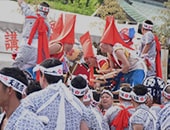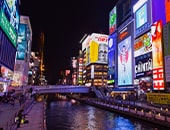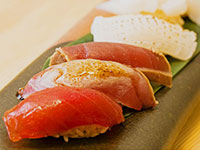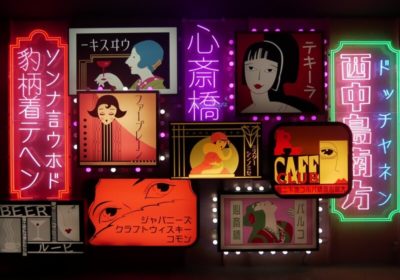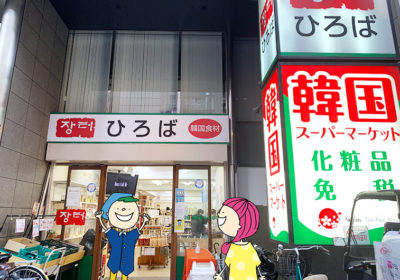

Supporter
Bring in the new year
with lucky foods in Kansai
The end of December is always a busy time of year! And it’s a fun time to go food shopping in Kansai! There are lots of special foods that you’ll see lined up on the shelves of your local supermarket. Let’s take a look at some of the ingredients you might find. Many of them are considered good luck and often have sayings or symbolic meaning associated with them, which I will attempt to explain.
Bо̄dara is a long piece of dried cod that’s usually flavored with soy sauce. The word for cod in Japanese is “tara” and the phrase “Tara fuku o taberu” means to eat to your heart’s content. So when we think about eating bodara at New Year’s we also pray that we will have sufficient food for the coming year. Bо̄dara is also quite big, so it’s visually impressive.

The classic way to prepare this is to cook it with shrimp-shaped taro (ebiimo) to make a dish called imobо̄. The dried cod actually takes around 3 days to one week to rehydrate, so you need to plan ahead if you’re making this dish (I’ve never made it myself). But I can say it is delicious! It’s salty and sweet and sort of melts in your mouth. And it is an unforgettably delicious traditional New Year’s dish.
And now for one of my favorites—ozoni!
This soup is a traditional part of New Year’s meals all over Japan. In Kansai it’s made with white miso, so it’s rich and creamy and absolutely delicious! I always put taro in my ozoni and cut it in the traditional 6-sided shape. It takes a bit of time, but looks lovely. Any leftover miso, I use to make yuzu miso and then saikyo-zuke (a Kyoto-style pickled fish).
But, let’s get back to the ozoni. I always put taro, red carrots, round mochi , and yuzu into a sweet miso broth. There’s even a special kind of taro that I sometimes serve. The largest part of the taro root is called “kashira imo” and can be reserved for the head of the household. The meaning behind this particular root is to bring success in life and the ability to lead others.

Kansai and Kanto have a different the lucky trio!
Like many traditions, there are a lot of differences between New Year’s food in Kansai and Kanto. Many people live alone or with a small nuclear family and may not eat big New Year feats, so I’ll just mention the 3 lucky appetizers to go with your New Year’s meal or drink. Both regions eat sweet black beans and herring roe, but Kanto traditionally includes dried sardines or anchovies and Kansai tradition includes burdock root. Because burdock grows straight and deep into the ground, it is thought to bring stability and happiness to one’s family.

There will be lots of opportunities to drink and eat as we go into the new year. Make sure you don’t eat or drink too much. And have a happy 2022!!!

Supporter
The contents of this page were current at the time it was posted, but may differ from the present.
Text visible in this map is based on information from Map Tiler and may differ from actual geographical names.







